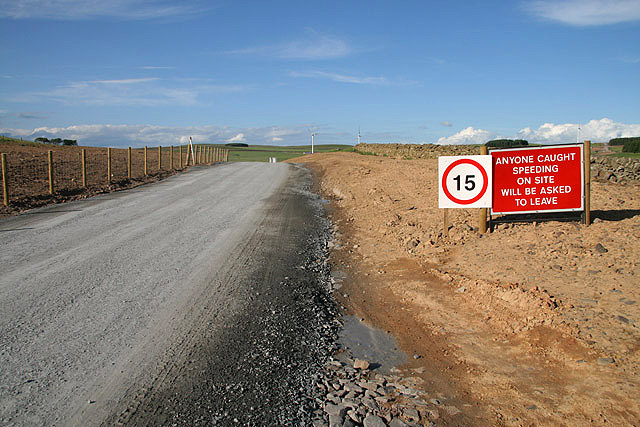Construction Road Stabilization

Definition
Stabilization of temporary construction access routes, on-site vehicle transportation routes, and construction parking areas to control erosion.
Where Practice Applies
All traffic routes and parking areas for temporary use by construction traffic.
Advantages
- Proper grading and stabilization of construction roads and parking areas reduces erosion and prevents dust problems.
- Road stabilization can significantly speed on-site work, avoid instances of immobilized machinery and delivery vehicles, and generally improve site efficiency and working conditions during adverse weather.
Disadvantages/Problems
- Measures on temporary roads must be cheap not only to install but also to demolish if they interfere with the eventual surface treatment of the area.
- May require maintenance to replace aggregate or repair ruts.
Planning Considerations
- Avoid steep slopes, excessively wet areas, and highly erodible soils. Controlling surface runoff from the road surface and adjoining area is a key erosion control consideration. Provide surface drainage and divert excess runoff to stable areas.
- Areas which are graded for construction vehicle transport and parking purposes are especially susceptible to erosion. The exposed soil surface is continually disturbed, leaving no opportunity for vegetative stabilization. Such areas also tend to collect and transport runoff waters along their surfaces. During wet weather, they often become muddy quagmires which generate significant quantities of sediment that may pollute nearby streams or be transported offsite on the wheels of construction vehicles.
- Dirt roads can become so unstable during wet weather that they are virtually unusable. Immediate stabilization of such areas with stone may cost money at the outset, but it may actually save money in the long run by increasing the usefulness of the road during wet weather.
- Permanent roads and parking areas should be paved as soon as possible after grading. As an alternative, the early application of stone may solve potential erosion and stability problems and eliminate later regrading costs. Some of the stone will also probably remain in place for use as part of the final base course of the road.
Design Recommendations
- A 6-inch course of 2 to 4-inch crushed rock, gavel base, or crushed surfacing base course should be applied immediately after grading or the completion of utility installation within the right-of-way. A 4-inch course of asphalt-treated base may be used in lieu of the crushed rock, or as advised by the local government.
- Temporary roads should follow the contour of the natural terrain to the maximum extent possible. Slope should not exceed 15 percent. Roadways should be carefully graded to drain transversely. Provide drainage swales on each side of the roadway in the case of a crowned section, or one side in the case of a super-elevated section.
- Drain inlets should be protected to prevent sediment-laden water entering.
- Areas adjacent to culvert crossings and steep slopes should be seeded and mulched.
- Dust control should be used when necessary.
Maintenance
- Inspect stabilized areas regularly, especially after large storm events.
- Add crushed rock if necessary and restabilize any areas found to be eroding.
- All temporary erosion and sediment control measures should be removed within 30 days after final site stabilization is achieved or after the temporary practices are no longer needed.
- Trapped sediment should be removed or stabilized on site. Disturbed soil areas resulting from removal should be permanently stabilized.
References
Massachusetts Department of Environmental Protection, Office of Watershed Management, Nonpoint Source Program, Massachusetts Nonpoint Source Management Manual, Boston, Massachusetts, June, 1993.
U.S. Environmental Protection Agency, Storm Water Management For Construction Activities EPA-832-R-92-005, Washington, DC, September, 1992.
Washington State Department of Ecology, Stormwater Management Manual for the Puget Sound Basin, Olympia, WA, February, 1992.